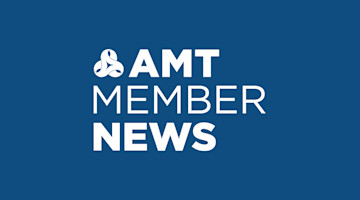DOWNLOAD THE FULL, UPDATED MANUFACTURING MANDATE
A Vision for the Future
Advanced manufacturing is the cornerstone of national security, technological leadership, and economic strength. Investing in innovation, ensuring a stable tax, trade, and regulatory environment, and reinforcing the U.S. industrial base will build a stronger, more resilient manufacturing industry and a forward-thinking, globally competitive economy. This 2025 update to the Manufacturing Mandate by AMT – The Association For Manufacturing Technology outlines these key priorities.
INNOVATION
Unlocking the Future: Harnessing the Power of Manufacturing Technology
Advanced manufacturing goes beyond producing goods. It shapes the future. The skills and technologies developed through the industry benefit various sectors, including health care, aerospace, construction, energy, and transportation. These innovations build defense capabilities, strengthen economic resilience, and establish the groundwork for sustainable, long-term growth.
Accelerate Adoption
Promoting manufacturing technology adoption through incentives for small and medium-sized enterprises would allow more companies to realize the potential of automation, artificial intelligence, and other technologies to enhance productivity and competitiveness.
Cultivate a Skilled Workforce
Preparing a workforce with the skills to understand and operate the technology in advanced manufacturing facilities is essential. It requires a vision of the future and specialized training programs, apprenticeships, and educational initiatives.
Foster Collaborative Research
Macro forces have led to impacts primarily in the sub-tiers of the defense supply chain; a surprising level of foreign dependence on competitor nations exists; workforce challenges face employers across all sectors; and many sectors continue to move critical capabilities offshore in pursuit of competitive pricing and access to foreign markets.
GLOBAL COMPETITIVENESS
Ensuring Stability and Predictability: The Pillars of Growth in Manufacturing
Advanced manufacturing is an innovation engine, generating new industries, products, and high-wage jobs. Certainty is key to sustaining this momentum – especially in tax, trade, and regulatory environments. Uncertainty in the business landscape poses a significant barrier to growth.
Revise Tax Policies for Investment
The tax code should encourage investment and modernization in manufacturing by permanently allowing expensing of manufacturing technology and R&D costs. Additional support for small and medium-sized businesses, such as a permanent 20% pass-through deduction and reducing the estate tax, will foster high-quality job creation in the United States.
These priorities were enacted as part of the One Big Beautiful Bill Act that was signed into law on July 4, 2025.
Level the Playing Field
Addressing the tax advantage of imports when entering the U.S. market is essential. Correcting this imbalance with sound tax and regulatory policy, supply chain security, and favorable trade agreements will create a fairer, more competitive environment for domestic manufacturers while holding trade violators accountable.
Enact Regulatory Reform
Working closely with industry leaders is vital to identifying and mitigating the unintended consequences of new regulations. Collaboration between stakeholders and regulators will help maintain manufacturing strength without causing unnecessary obstacles.
NATIONAL SECURITY
Building a Stronger, More Resilient U.S. Industrial Base
Advanced manufacturing underpins U.S. national security. Technological advancements in the industry strengthen military capabilities and resilience against global threats while driving economic growth and sustainability.
Supercharge R&D Investment
To enhance defense capabilities, it is critical to increase R&D funding in cutting-edge technologies such as artificial intelligence, digital twins, and autonomous systems. Government grants, private-sector tax incentives, and academic partnerships will accelerate the development and transfer of groundbreaking technologies.
Secure the Supply Chain
Modernizing policies that ensure supply chain security while embracing technologies that improve efficiency, resilience, and transparency is crucial. Temporary, targeted tariffs can be a valuable tool, along with initiatives that promote reshoring, strengthen domestic manufacturing capabilities, and utilize tech-driven solutions to future-proof supply networks.
Build Public-Private Partnerships
The future of manufacturing relies on collaboration. Policies that promote partnerships between defense contractors and smaller, agile businesses, especially those focused on advanced and emerging technologies, will unlock new efficiencies and innovations that can scale to meet national defense requirements.









